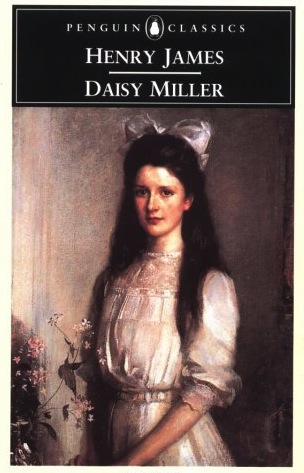Henry James. Daisy Miller. 1879. Trag-rom-ic novella: tragedy-romance-comedy.
 This enchanting little narrative is elegantly crafted and boasts one of the most appealing heroines in literature, though its style does perhaps verge on the constipated.
This enchanting little narrative is elegantly crafted and boasts one of the most appealing heroines in literature, though its style does perhaps verge on the constipated.
Indeed, at first I found myself rebelliously comparing this novella to the writings of P. G. Wodehouse, who playfully aped James’s high-brow style and preoccupation with the aristocracy, and of Edith Wharton, who never attained the color and intimacy of James the Younger. Yes, James expresses a typically Anglo contempt for “dagoes,” sprinkles the narrative with pretentious French phrases and references to Byron and Cherbuliez (?); and gives us characters we tend to identify as Wodehousian goofs: the lounging gentleman, the charmingly artless young lady, and the blunt little boy who is the instrument of their meeting. Nevertheless, by its end I was willing to proclaim Daisy Miller a masterpiece.
My change of heart was due partly to James’s elegant craftsmanship and the ephemeral delicacy of his prose. Mostly, though, it was because I had fallen in love with Daisy Miller myself. She is so cute! So frank and sincere—so utterly charming! She teases and tantalizes the gentlemanly Mr. Winterbourne and shocks polite society (if it were so unmannerly as to allow itself to be shocked) with her very public goings-on with the suave Mr. Giovanelli. She is the perkiest little flirt in the world, and yet she is so innocent, so unaware of how unforgiving the world can be, and so heartbroken when she finally comes into this knowledge. The ending is inevitable.
